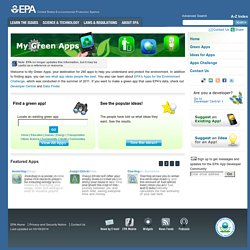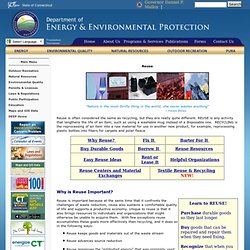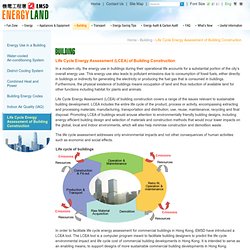

Browsing and energy consumption. Art & Energy. Pixelache and Helsingin Energia are collaborating to produce artworks related to collective energy consumption in Helsinki area.

The artworks will be located in public space in Helsinki and/or presented as online projects. In the first round of the project, following artists were invited to submit proposals for artworks: Miska Knapek, Andy Best, Maria Duncker, Unsworn Industries (Erik Sandelin & Magnus Torstensson) and 4um (Karthik Acharya, Arto Tommiska, Elina Alatalo ja Jukka Hautamäki). The proposals were made public in October 2009 so that citizens of Helsinki, energy consumption experts and the electronic art community could give feedback on them. The project jury chose two artworks to be realised during 2010/2011: Power Flower by Andy Best and an untitled project by Miska Knapek. Prototypes of both of these works will be presented in Pixelache Helsinki 2010, as well as information about all the submitted proposals. Human Viz events are aimed for the people of Helsinki.
Whattzapp energy - Google-Suche. Reducing Electricity Use in Households (and Businesses) Well before the recent fuss about increases in energy prices, the reduction of electricity use by households and businesses had already been identified as an important national policy goal, with benefits for the climate, the electricity supply sector, business costs and household budgets.

However, despite increasing costs to both users and producers and warnings about the impacts of climate change, consumption of electricity continues to rise and is predicted to continue rising over the coming decades. This increased demand, and the need to shift away from fossil fuel sources, is driving costly investment in the electricity generation and distribution networks, further increasing the cost of power. Dashboard. Apps for Energy. US Environmental Protection Agency. Note: EPA no longer updates this information, but it may be useful as a reference or resource.

Welcome to My Green Apps, your destination for 290 apps to help you understand and protect the environment. In addition to finding apps, you can see what app ideas people like best. You also can learn about EPA's Apps for the Environment Challenge, which was conducted in the summer of 2011. If you want to make a green app that uses EPA's data, check out Developer Central and Data Finder. Find a green app! See the popular ideas! The people have told us what ideas they want. Featured Apps Joulebug JouleBug is a social, mobile game that rewards players for reducing energy waste. Avego Driver. Download OpenProj - Project Management from SourceForge.net. Wattzon. WattzOn is a free web-based online tool created by Saul Griffith and Raffi Krikorian.

It allows users to calculate their total energy footprint by estimating their direct and indirect power consumption with the stated goal of educating users about energy efficiency and conservation. It's notable, because unlike most carbon calculators it measures energy consumption, and not the by-products (CO2, or CO2 equivalent emissions) and because it aggregates information into a holistic view of energy consumption allowing users to see the energy used in their driving compared to their eating, for example.
WattzOn has garnered media coverage from a number of blogs and media outlets such as Business Week,[4] Wired magazine,[5] and Lifehacker.com.[6] In 2011 the site departed markedly from its original intent of helping users calculate a comprehensive power footprint of their lives. One Watt, One Year, One Dollar" WattzOn is a website that allows users to calculate their energy consumption, tracking just what kind of an impact you're making.

Rather than having a carbon footprint, though, you see your impact in terms of energy consumption, or watts. DEP: Reuse Main Page. Do It Yourself Home Improvement and RepairEstablished in 1995 with a goal to provide consumers with unbiased home improvement and repair information in a community environment.

Do It Yourself NetworkDIY Network’s programs and experts answer the most sought-after questions and offer creative projects for do-it-yourself enthusiasts. The site features broadband video channels including home improvement, crafts, automotive, gardening, and woodworking along with step-by-step instructions totaling more than 20,000 projects online. Fixers Collective NYC; FixItClinic, and FreeGeekAlthough not in CT, these are great models for implementing just about anywhere. They are dedicated groups of folks who meet regularly for "fixing sessions" where people can bring something broken to be fixed. wiki-HowwikiHow is a collaboration to build and share the world's largest, highest quality how-to manual.
Search results for embodied energy. Designing with Energy. The energy that goes into manufacturing our material world is the largest component of our energy consumption and something designers have a direct impact on.

Yet few people understand this embodied energy or actively design with it in mind. This struck us as a little scary, so we started researching our own embodied energy footprints, visualising the data and creating tools that could integrate this data into our design process. The result was an energy driven design process and our Energy Trumps design tool. "The real issue is not our direct consumption of energy but the greenhouse gases embodied in the goods we buy" Monbiot (2010) Understanding embodied energy.
Our own understanding of embodied energy started with a very personal exploration. Search results for embodied energy. Greendex: Survey of Sustainable Consumption. What Is the Greendex?

You've heard about it for years now—everyone’s interested in being green. But do you really know how your personal choices are adding up? What about the choices of your fellow citizens? What behaviors are people adopting globally that have a positive impact on environmental sustainability? Energyland - Life Cycle Energy Assessment (LCEA) of Building Construction. In a modern city, the energy use in buildings during their operational life accounts for a substantial portion of the city’s overall energy use.

This energy use also leads to pollutant emissions due to consumption of fossil fuels, either directly in buildings or indirectly for generating the electricity or producing the fuel gas that is consumed in buildings. Furthermore, the physical existence of buildings means occupation of land and thus reduction of available land for other functions including habitat for plants and animals. Life Cycle Energy Assessment (LCEA) of building construction covers a range of the issues relevant to sustainable building development. LCEA includes the entire life cycle of the product, process or activity, encompassing extracting and processing materials; manufacturing, transportation and distribution; use, reuse, maintenance; recycling and final disposal.
Life cycle of buildings The program will output the following results: Life-cycle assessment. Life-cycle assessment (LCA, also known as life-cycle analysis, ecobalance, and cradle-to-grave analysis)[1] is a technique to assess environmental impacts associated with all the stages of a product's life from-cradle-to-grave (i.e., from raw material extraction through materials processing, manufacture, distribution, use, repair and maintenance, and disposal or recycling).

LCAs can help avoid a narrow outlook on environmental concerns by: Compiling an inventory of relevant energy and material inputs and environmental releases;Evaluating the potential impacts associated with identified inputs and releases;Interpreting the results to help make a more informed decision.[2] Columns - Professional Engineering. Raising Standards – Do we need a new rating system? » Consumer Products.
By Roger Mainwaring-Burton - Last updated: Monday, September 5, 2011 Energy labelling has change the way that consumers shop. From its first introduction in the early 1990s to its most recent manifestation (since the original draft in 1992, EU legislation has been updated 12 times), it has concentrated on one thing – Energy. Consumers have developed an understanding of the ways that energy equates to cost and manufacturers and marketeers are always quick to capitalise on this in advertising.
However, this performance metric may be coming to the end of its useful life. Typically the rating has been applied to products where their use has the most significant impact on the environment, a category into which most consumer products fall. This then touches on a bigger question: Does the consumer really want to reduce their environmental impact, or do they just want to save money? This is where the inevitable buzz-word of today comes up – Life Cycle Assessment (or LCA).
TalkingPlug.com. 008 - Transparency - Vampire Energy. More Infographics on Good. Forgot to turn off the lights? There's an app for that. There are few things as ubiquitous and essential to our day-to-day lives as electricity, yet we know so little about it. Most homeowners and office workers know next to nothing about where the power they rely on comes from, how much they're using right this instant, and how much it's costing them. As long as the lights are on, we're apparently happy to remain in the dark about the rest of the equation. Which, when you think about it, is a deeply twisted scenario. Imagine, just for instance, if your car's fuel gauge was mounted in the spare-wheel compartment in the trunk, and you just stopped at regular intervals to fill up the tank and then waited on a monthly bill to find out what you'd paid for your gas recently.
In an age of omnipresent, voluminous information, this data gap would surely be fairly easy — and profitable — to fill. As Canada's Globe and Mail reports, the latest device is an obvious one: a smart plug. Why? Control Your House Lights (and more) with Your iPhone. Recently I started to look into ways to make my home a “smart home.” I’ve been wanting to do it for awhile, but had never taken the time to research how easy or complex it was. For some odd reason I had it set in my mind that it would require a lot of additional wiring in my house to get it done, but boy was I wrong. I started at the SmartHome.com site where they have a large array of devices that were suited for exactly what I was looking to do.
Over the past two months I’ve been toying with setting everything up, ordering more, and in general just having a lot of fun watching everything come together. Below I’ve outlined my journey so that you can hopefully learn from some of my mistakes, and share some of your own tips if you’ve set up this stuff before.